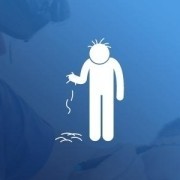Norwood Scale 7
The Norwood scale, also known as the Hamilton-Norwood scale is a classification system that uses a 1 to 7 scale, to help doctors measure the extent of male pattern baldness. It was first introduced by Dr. James Hamilton in 1951, after observing the male-pattern baldness signs in over 300 men. However, it was updated later by O’Tar T. Norwood in the 1970s, and it’s now referred to as the Norwood Scale.
Most cosmetic clinics are now using this scale to diagnose the extent of baldness, discuss treatment options, and measure the effectiveness of treatment. To help you understand your case better, we are going to discuss Norwood Scale 7, this stage is characterized by severe, and significant hair loss due to male pattern baldness. You would notice that the front of your scalp, temples, and crown is no longer have much hair amount, however, you would have only your horseshoe pattern of hair remaining.
How does Norwood scale 7 look like?
Norwood 7 is considered the most extensive pattern of the hair loss process. If your hair loss has progressed to this point, you would have lost the high sides of a Norwood 6 stage and your crown would have extended leaving only a narrow strip of hair around the back and sides of your scalp. The temples would have receded too.
As your hair sides dropped down and your temples receded backward and you are left with a large expanse of forehead. Many people think this is the right time for shaving their heads and carry off the bald look.
Although many doctors believe that this stage pattern is the most difficult to treat by a hair transplant, you need to consider the amount of donor hair needed for the transplant especially since there is a large balding area and only a few remaining hair grafts.
Can Norwood scale 7 get a hair transplant?
Yes, as you already know, the Norwood 7 stage means not having enough hair to be used as coverage for balding areas due to the severity of the patient’s hair loss.
However, many surgeons recommend using non-head hair to restore the patient’s coverage. The hair transplant process would involve more than one surgery to ensure the best results (usually two surgeries are enough). Your doctor must extract hair from your head and beard to increase hair density in the crown and restore a natural-looking hairline.
Doctors would spend a lot of time with the patient to discuss their new hairline, temple, and crown design, and try to make it look natural as much as possible, in addition, your hair transplant design must suit your face shape.
Keep in mind that a small number of grafts could create an isolated forelock, which is not attached to anything, the surgeon must take his time in designing the hairline and crown before starting the procedure, especially since it is very difficult at this point to correct the design and make it look more natural using only a small number of grafts. At this stage of balding, the crown patch will be large and the bridge should be designed in a way that makes the crown look natural. A good surgeon can create a natural fine hair scattering on the crown.
How many grafts are needed for Norwood scale 7?
As we have mentioned, a Norwood 7 involve total loss of hair at the front of your scalp in addition to having a full horseshoe bald patch on the crown, you may also have some hair left on the sides and the back of the head. The number of needed grafts for a hair transplant in Norwood 7 patients could be around 3200 to 5000 grafts for the hairline and frontal area, in addition to another 5000 to 6500 grafts to cover the crown area.
However, this is not the case for every patient, the needed grafts for hair transplant in a Norwood 7 patient is different due to the remaining hair amount and quality, in addition to the patient’s desires and the treatment plan. We encourage you to consult your doctor who will develop a personal treatment plan for you and he can also give you a brief on what to expect after the surgery.
References:



